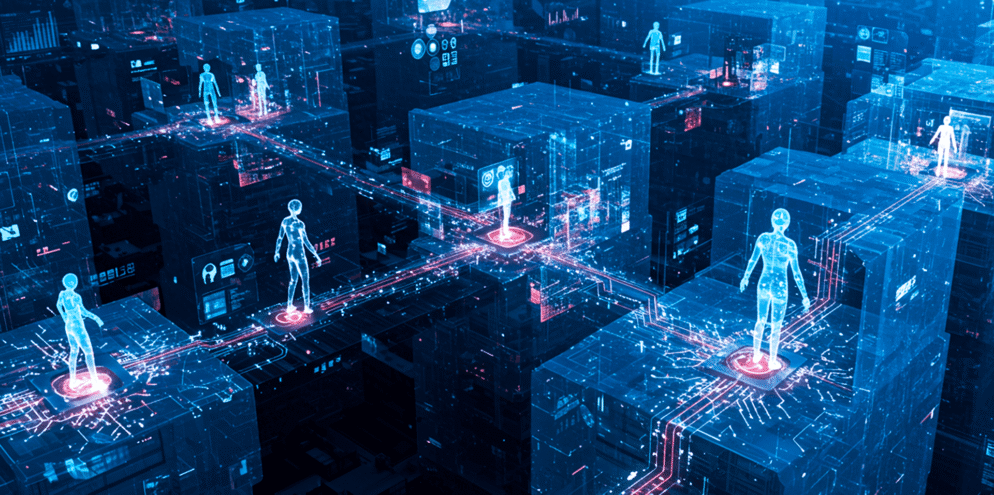How AI in enterprise architecture is rewriting system design
3 de July de 2025

3 de July de 2025

Most enterprise systems are still designed primarily for human use, with interfaces, journeys, and workflows that guide users through a structured set of steps. However, the growing presence of AI in enterprise architecture is beginning to change that.
This shift represents a necessary transformation in enterprise architecture, with central interfaces being replaced by intent, context, and automation. Today, we explore what it means to move beyond user interfaces toward intent-based architectures and how this affects everything from system design to security and scalability.
For decades, enterprise tech has been built with the user in mind. The starting point was always the interface screens, menus, dashboards, and inputs. That model made sense when humans were the only ones navigating systems.
Now, these systems need to respond to triggers that come from context, not just clicks. Since AI agents operate on intent, they read environments, interpret data, and act without needing a user to initiate every move.
The Tech Vision 2025 highlights that more than half of companies anticipate utilizing autonomous agents to manage entire business functions within the next three years. These agents won’t just execute instructions; they will make decisions, reconfigure services, and adapt to changing conditions, all without touching a UI.
If the user is no longer the primary interface, the architecture needs to change. Soon, enterprise systems must be able to:
This requires breaking down silos and designing infrastructure that supports constant communication between systems. APIs become the interface, and services must be modular, composable, and adaptable in real time.
Autonomous agents introduce new security challenges, such as when a machine can initiate actions, approvals, and transactions. How do we control what it can and cannot do?
Traditional access control models assume a human behind the screen. With AI agents, systems must dynamically manage permissions. According to Gartner’s cybersecurity roadmap, future-ready architectures will require machine identity governance, continuous authentication, and policy-based automation.
But it’s not enough to know who has access. You also need to know when, why, and under what conditions that access is triggered.
As AI in enterprise architecture gains autonomy, businesses must ensure that system decisions remain explainable and trustworthy. After all, trust doesn’t come from automation alone, but from clarity.
One of the key insights from recent reports is the importance of explainability and auditability. When agents make decisions on behalf of users, systems must be able to:
Systems designed for human interaction typically batch data, wait for input, or process events sequentially. AI agents don’t work like that; they act continuously and often simultaneously. To support this, enterprise infrastructure must be:
Cloud-native architectures and serverless models can help meet this demand. Data fabrics and streaming platforms also help ensure agents always have access to up-to-date context.
Interfaces won’t disappear, but their role will change. They become windows into the system rather than the steering wheel. The real decisions will occur in the background, while the interface will provide transparency, overrides, and user input as needed.
Moving beyond the interface doesn’t mean removing people from the loop. It means building systems that act independently when it makes sense, while staying transparent and controllable. So companies that embrace intent-based architectures will be better equipped to scale and adapt in fast-moving, data-rich environments, where speed and clarity go hand in hand.
At Luby, we help companies rethink the role of AI in enterprise architecture, building systems that are autonomous, secure, and context-aware. Want to explore how? Talk to our team.